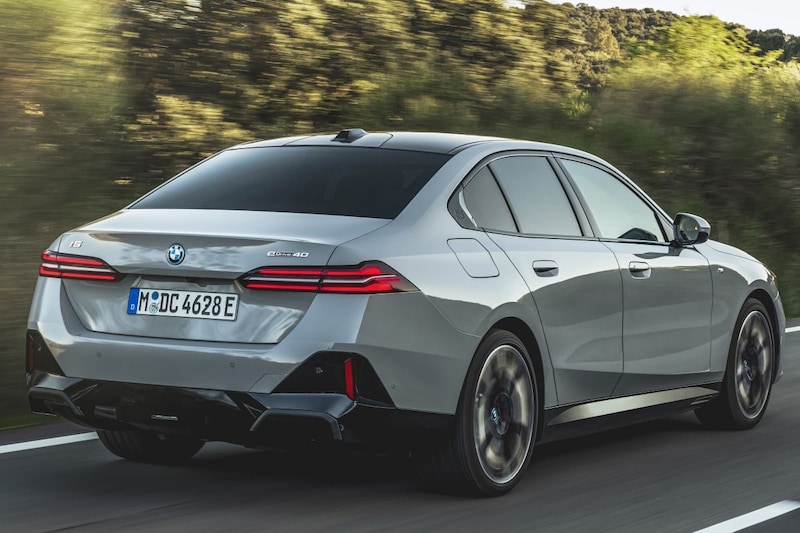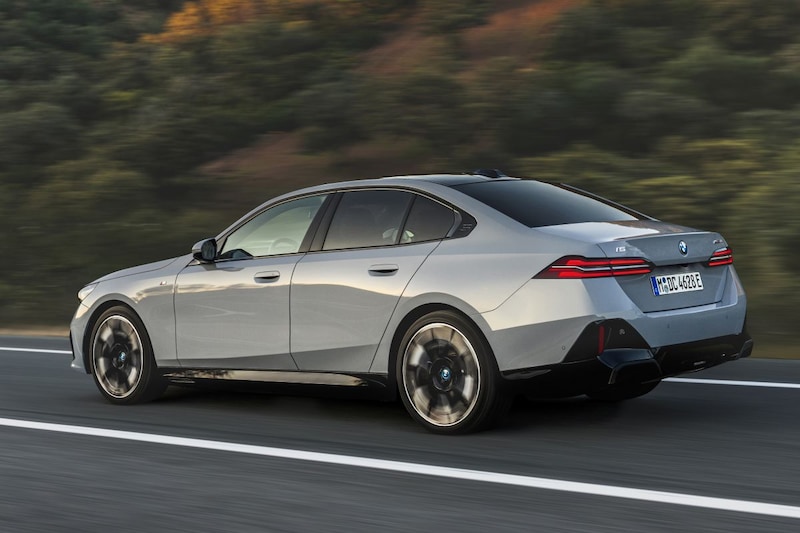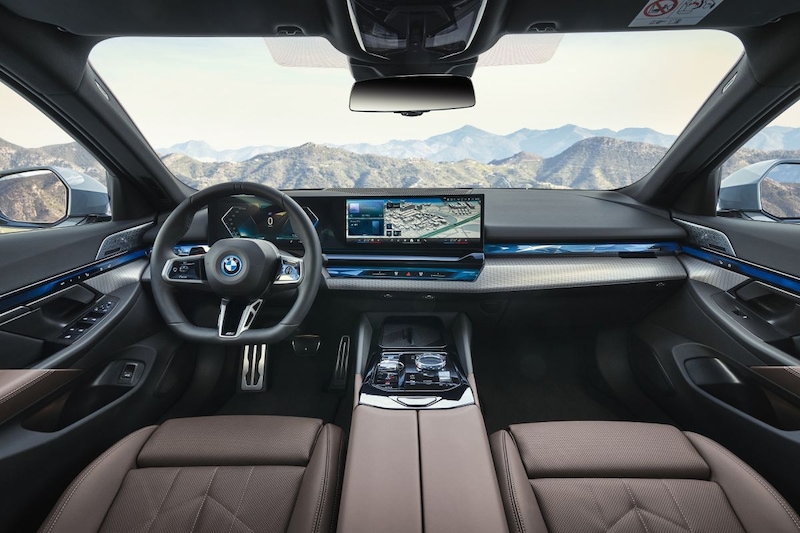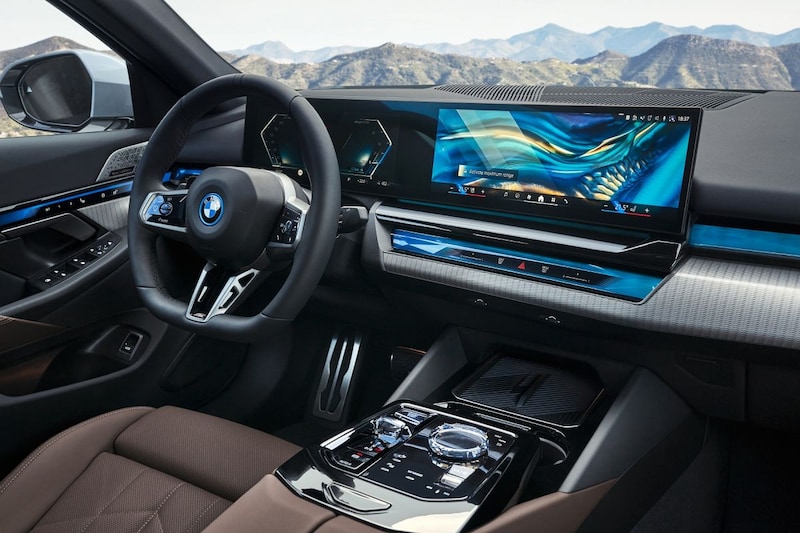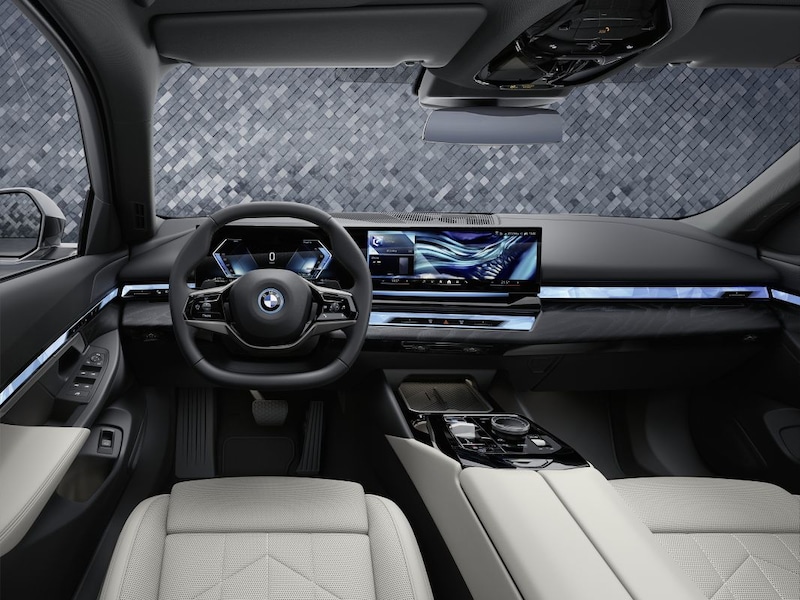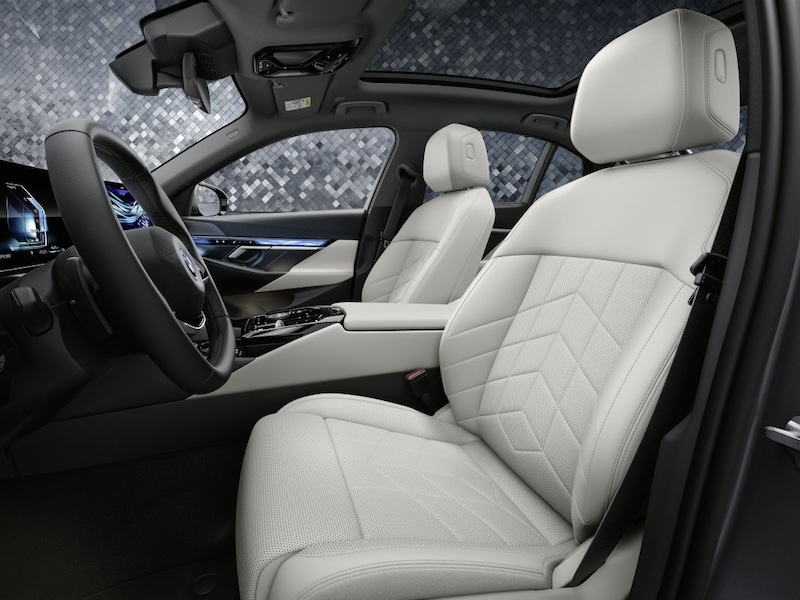Dead-painted competitors


Just 29 days after unveiling the all-new Mercedes-Benz E-Class, BMW presented the next-generation BMW 5 Series to us last week. The ‘5’ and the ‘E’ have been battling each other for decades for the hearts of the buying public, but which of the new two will win that battle on paper?
We’ll put them side by side for a comparison test anyway in the not too distant future, but before we can do that with the brand new BMW 5 Series and almost equally new Mercedes-Benz E Class, we need to talk about the photos and – especially – of the technical data. On the basis of the latter we can already create a good picture of how the two brand new ruffs relate to each other. When it comes to objective matters, at least. However, with cars like these two, the appearance also plays a role, so we will first consider that.
Conceptually, the two are of course very similar. Both are pretty sturdy German sedans (which will later also be available as a station wagon) that are also immediately recognizable as such. The BMW wears a more pronounced costume than the Mercedes-Benz, which keeps it quite classic. Mercedes does risk burning its fingers with a piece of ‘EQ styling’ on the new E-class in the form of a piece of black around the grille, but that is – especially with a dark body color – a small detail.

The piece of black around the grille is not very noticeable even with lighter exterior colors.
The otherwise fairly sloping design of the Mercedes is easier to digest than that of the BMW, which is not helped by its larger dimensions. Both cars are roughly 5 meters long and 1.90 meters wide, but the BMW is a lot (you) larger in all directions. You bet that the car more presence gives.
| BMW 5 Series | Mercedes Benz E class | Difference | |
| Length | 5.06m | 4.95m | BMW: + 11 cm |
| Width | 1.90m | 1.88m | BMW: + 2 cm |
| Height | 1.52m | 1.47m | BMW: + 5 cm |
| Wheelbase | 2.99m | 2.96m | BMW: + 3 cm |
* Information on the weight of the new BMW 5 Series and Mercedes-Benz E Class is not yet available.
Interior
The new Mercedes-Benz E-class also has more classic shapes on the inside than the BMW 5 series, but in the interior this does not necessarily result in a less striking appearance. Both brands apply even more meters of mood lighting than in the outgoing generations of the two models and their limousines – as befits them – are full of technology. The Mercedes may also have more rounded shapes here, but it may have a more controversial interior than the 5-series.
The BMW 5 Series no longer has physical climate control, but with a screen in front of the driver, one in the middle and a control cluster on the center console, it makes a more conventional ‘cockpit’ impression than the Mercedes. The E-class also has the aforementioned screens, but carries the middle one behind a large glass plate that takes up a considerable part of the dashboard. All in all, you can clearly see from the interiors of the two which is more about comfort and opulence, and which is more about driving and sportiness.
Text continues below the images.


Space use
Both cars therefore have fairly comparable external dimensions, but also a comparable technical layout. Both Mercedes-Benz and BMW make room in the nose of the car for up to six cylinders that are positioned in the longitudinal direction of the car and, if desired, place a large battery under the luggage compartment (in the case of the plug-in hybrids). Both cars are also basically rear-wheel drive, and optionally four-wheel drive. Whether that also results in a comparable interior space?
We’re not quite sure yet. Traditionally, BMW chooses to place its engines more ‘towards the middle’ of the car for better weight distribution, leaving less space for the occupants. Here too – at least until now – the E-class shows that it mainly focuses on comfort, so it is not surprising that the E-class is used much more often as a taxi.
Of course, we have not yet been able to measure the interior dimensions of the latest generations, but we cautiously assume that you are more spacious in the back of the new E-class than in the back of the new 5-series – despite the larger exterior dimensions of the latter. As far as the trunk size is concerned, we already have the figures: the Mercedes beats the BMW there with 540 versus 490 litres. If you go for a plug-in hybrid variant of the E-class, however, only 370 liters remain. BMW does not specify a specific loading volume for the plug-in variants, but because the 5-series body can also accommodate even more batteries (in the case of the electric i5), we are betting that the plug-ins will also be similar. n 490 liters of space. At a later stage we can confirm whether the BMW as a plug-in actually has a considerably larger luggage compartment than a plug-in E-class.
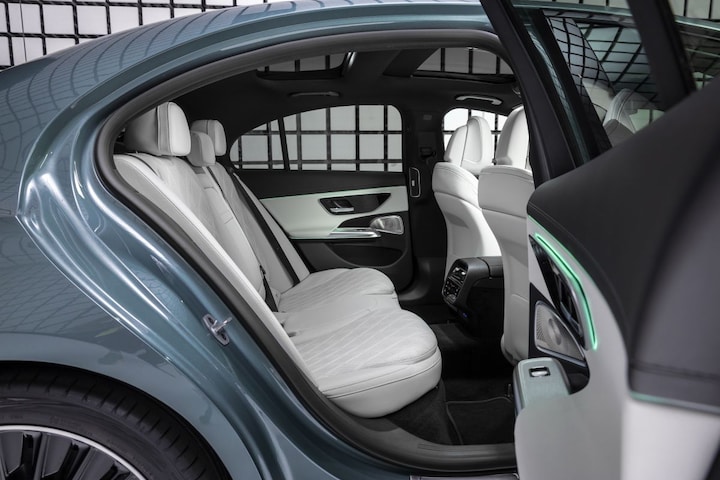
There is a good chance that you are more spacious here than in the back of the new 5-series, despite its larger outer dimensions.
Engine range
If we look under the hood, we find even more similarities. First, both cars are not available without electrification at all. Both BMW and Mercedes offer a choice of several mild hybrid and several plug-in hybrid powertrains. Both also offer a diesel engine: a four-cylinder with about 200 hp and rear or four-wheel drive. The petrol range is – apart from the plug-ins – just as well-arranged with the two. Here too, for the time being only a four-cylinder with about 200 hp, but then only available with rear-wheel drive. A wider range may follow later, because we know that at least the BMW can also be equipped with six-cylinder.
Not only because BMW supplies a six-cylinder 540i in other markets, but also because the plug-in hybrid 550e xDrive that is available in the Netherlands uses a six-cylinder. Together with the electric motor, this is good for a system power of 489 hp. The electric driving range for the 550e xDrive is 90 km, where the rear-wheel drive 530e has an electric range of 102 km.
Mercedes-Benz contrasts this with three plug-in hybrids, namely the E300e, E300e 4Matic and the E400e 4Matic, all three with an electric range of 99 to 119 km. The 300 variants have a system power of 313 hp, the 400 kicks it up to 381 hp. Please note: from a powertrain with a four-cylinder. No, Mercedes-Benz will not initially supply six-cylinders, but that may change in the future. In any case, there is still a plug-in hybrid with a diesel engine in the pipeline, and of course there will also be AMG variants again – although it is still exciting how many cylinders they will have.
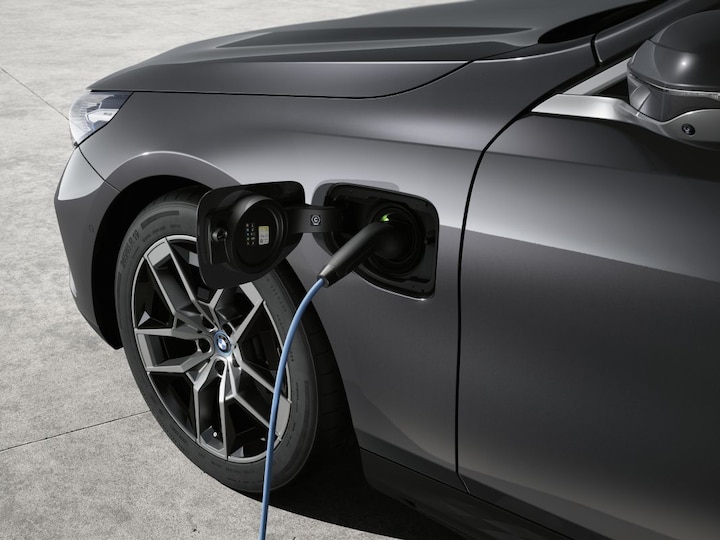
In summary
The new BMW 5-series and Mercedes-Benz E-class are, as expected, quite evenly matched. The BMW is remarkably much larger, which, with its less conventional design, ensures that you stand out earlier than with the classic-looking E-class. It won’t be much wider. Inside, the E tries harder to impress you, although the car conceals that nicely with its classic-looking shapes.
Technically, the cars are equally comparable, both in terms of range and specifications. As the 550e xDrive, the BMW already offers a creamy six-cylinder, which the Mercedes has to lack for the time being. In addition, the BMW is also available as a fully electric i5, where you have to go to the certainly not classic EQE for such a powertrain from Mercedes. Reason for another comparison in the future!
.
– Thanks for information from Autoweek.nl
